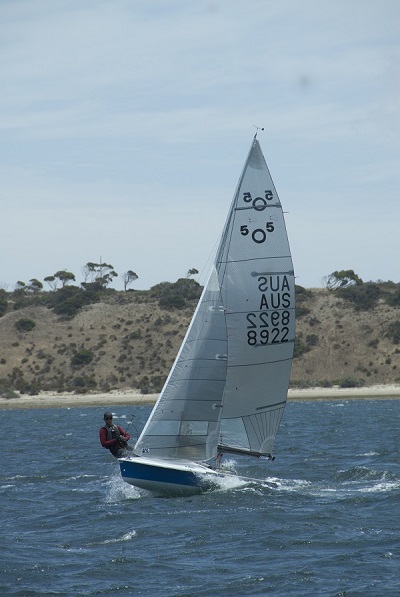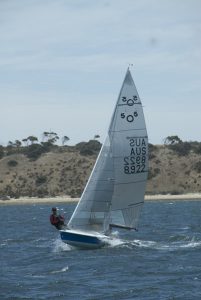

Effects of Headstay Sag
Headstay sag affects everything from boat speed to pointing ability and that’s why headstay sag matters.
Sailboats with headstay sag often point higher and maintain boatspeed better in light-air conditions. One of the key methods to power up a sail is to induce sag in the forestay.
Dinghies obviously only have one jib and many sailboat classes limit the number of jibs that a boat may carry. This means the ability to be able to power up and down is very important in changing conditions.
Effects of Headstay Sag and Why it Matters
When the headstay sags, it not only sags to leeward but also sags aft, which puts the luff closer to the leech, thereby adding depth to the jib. The key controls for manipulating headstay sag are shroud tension, mainsheet tension, and in some cases, headstay length.
In light air, the number one adjustment for headstay sag on boats with either deck-stepped or keel-stepped masts is varying the shroud tension. More tension effectively pulls the mast aft (assuming the chainplates are aft of the mast)
The other way to induce headstay sag is to minimize mainsheet tension. If the mast is stiff, trimming the mainsheet will quickly increase headstay tension and reduce sag. Ideally, in light and puffy conditions, you ease the mainsheet in a lull, the headstay sags to leeward, powering up the sail.
Other ways to induce headstay sag
Easing off the rig isn’t the only way to increase headstay sag. Chocking the mast at the partners, a mast ram or moving the butt aft are other methods of achieving the desired sag.
When you sag the headstay, the maximum draft in your jib moves forward. To compensate and keep the draft aft, ease halyard tension, which also creates additional power. If you increase headstay sag but the halyard remains too tight, you’ll get a knuckle in the front of the sail and an entry that’s too deep, so you won’t gain the overall power you’re looking for.
A major effect of increased headstay sag is that it rotates the middle of the sail, changing the angle of attack causing the mid-luff of the sail to move to leeward as well as aft. At the same time, the mid-leech rotates slightly inboard, similar to the effect of weather-sheeting, which increases pointing ability.
With too much headstay sag the leech will rotate inboard too far. The jib then becomes extra sensitive to sheet tension and stalls too easily. Equally problematic, the entry angle becomes too extreme. When you bear off to rebuild speed, you have to sheet out too much to power up the sail.

